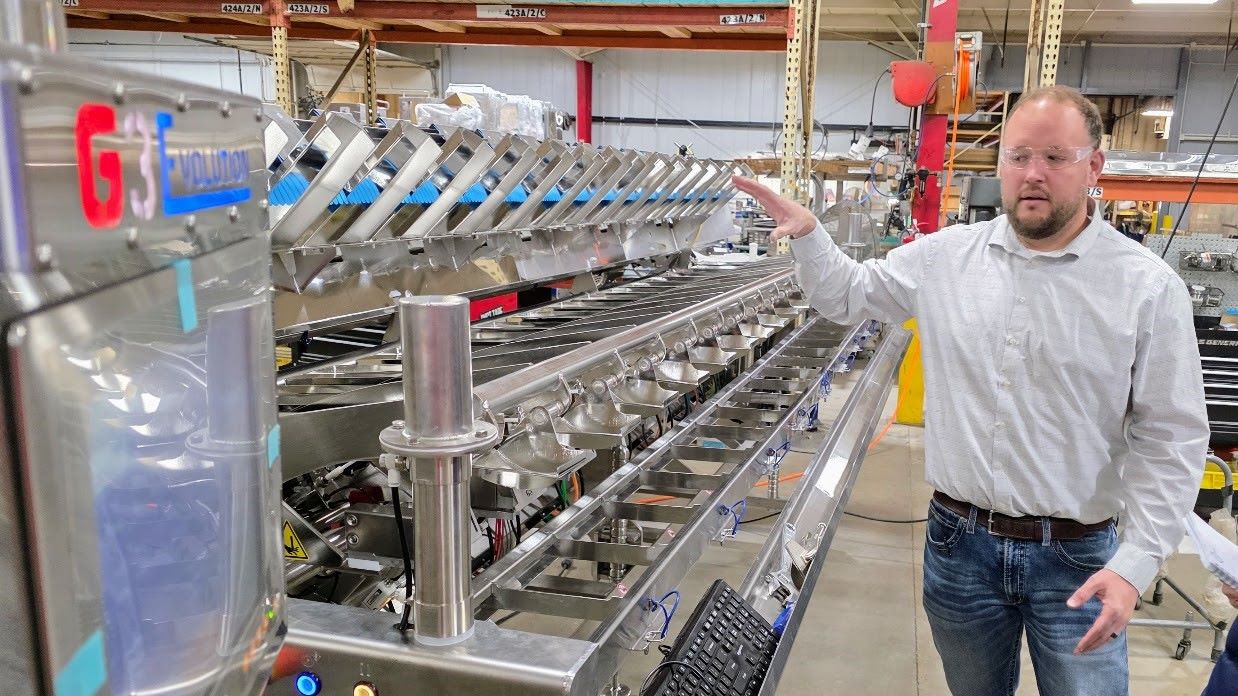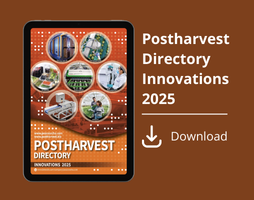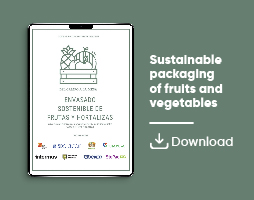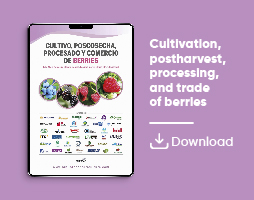News
Key Strategies to Optimize Stone Fruit Quality and Tackle Market Challenges
On April 3rd, the town of Fraga (Spain) hosted PostharvestTALKS, a technical event dedicated to enhancing the quality of stone fruit. Experts gathered to address crucial topics such as varietal selection, nutrition, precooling, automation, market requirements, and postharvest treatments—bringing together growers and industry professionals for a day of knowledge sharing and innovation
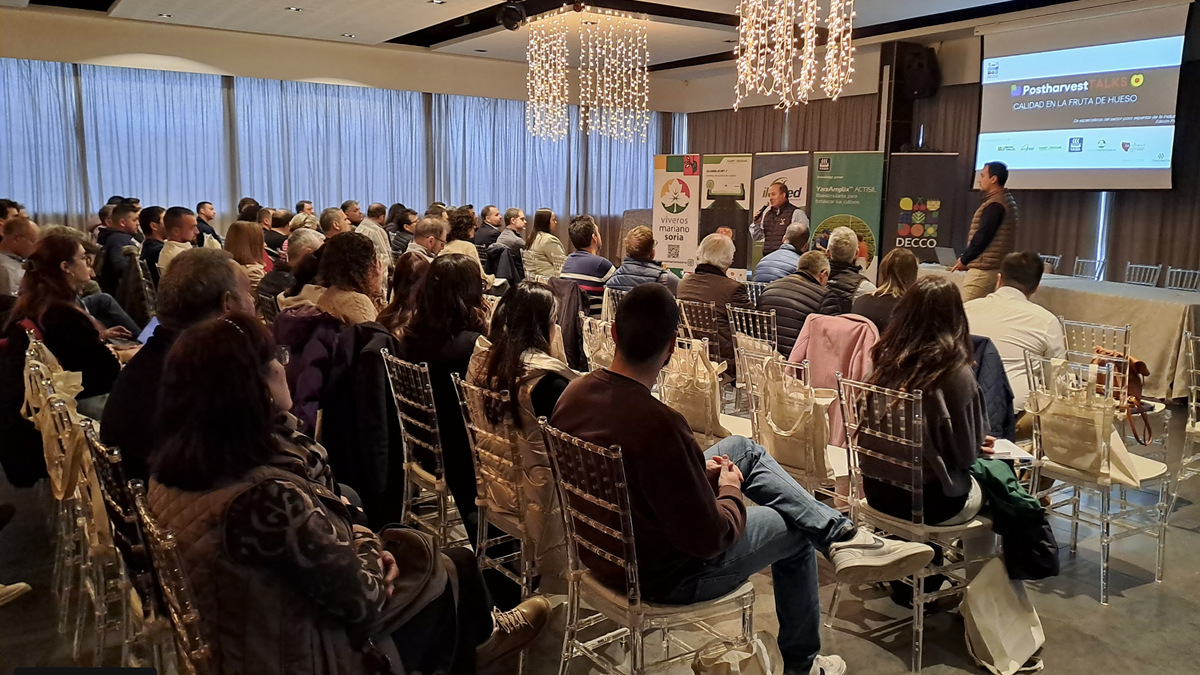
On April 3rd, a new edition of PostharvestTALKS took place in Fraga (Spain), this time focused on optimizing stone fruit quality from multiple perspectives. Key topics included varietal selection, proper fertilization, rapid precooling, accurate fruit sorting at the packing house, and the use of phytosanitary treatments to preserve quality. Another equally important subject discussed was the specific requirements fruit must meet depending on the target market.
The event was organized by DECCO, the Government of Aragón, Ilerfed, Maf Roda, Yara Iberian, Viveros Mariano Soria, and the Professional Association of Fruit and Vegetable Producers of Huesca (Excofrut). The opening remarks were delivered by Marc Vendrell, president of the association and general manager of Frutas Torres Molins, following an introduction by Eugenio Jiménez, stone and pome fruit technical sales specialist at Decco Ibérica.
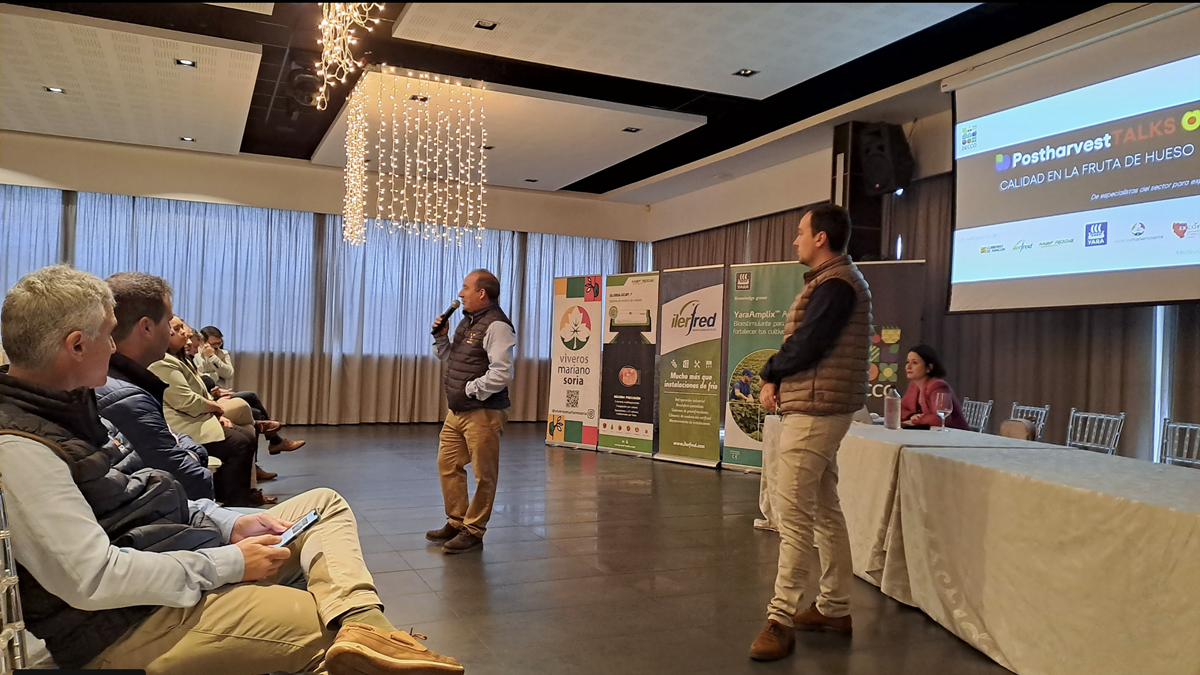
Eugenio Jiménez officially opened PostharvestTALKS Fraga, accompanied by Marc Vendrell.
Around one hundred attendees joined the event, mostly local growers, though professionals from other regions also took part, drawn by the technical depth that defines the PostharvestTALKS series.
Previous editions of PostharvestTALKS focused on apples and pears (Lleida, June 2023), and cherries and plums (Plasencia, April 2024).
The session was moderated by our colleague Claudia Conesa, editor of the SPE3 network of platforms, including Poscosecha.com and Postharvest.biz.
Market First: The Key to Varietal Selection
Viveros Mariano Soria specializes in a wide range of crops, including stone fruit, table grapes, almonds, olives, rootstocks, and specialty lines such as low-chill Frutimida varieties and dwarf fruit trees. Representing the third generation of this family business, Luis Elías Soria summed up their philosophy with one essential idea:
"Genetics now offers more options than ever, but the first thing is to know which market you're targeting."
Understanding the buyer and the traits they value—such as size, color, flavor, and shelf life—is crucial to making the right varietal choice.
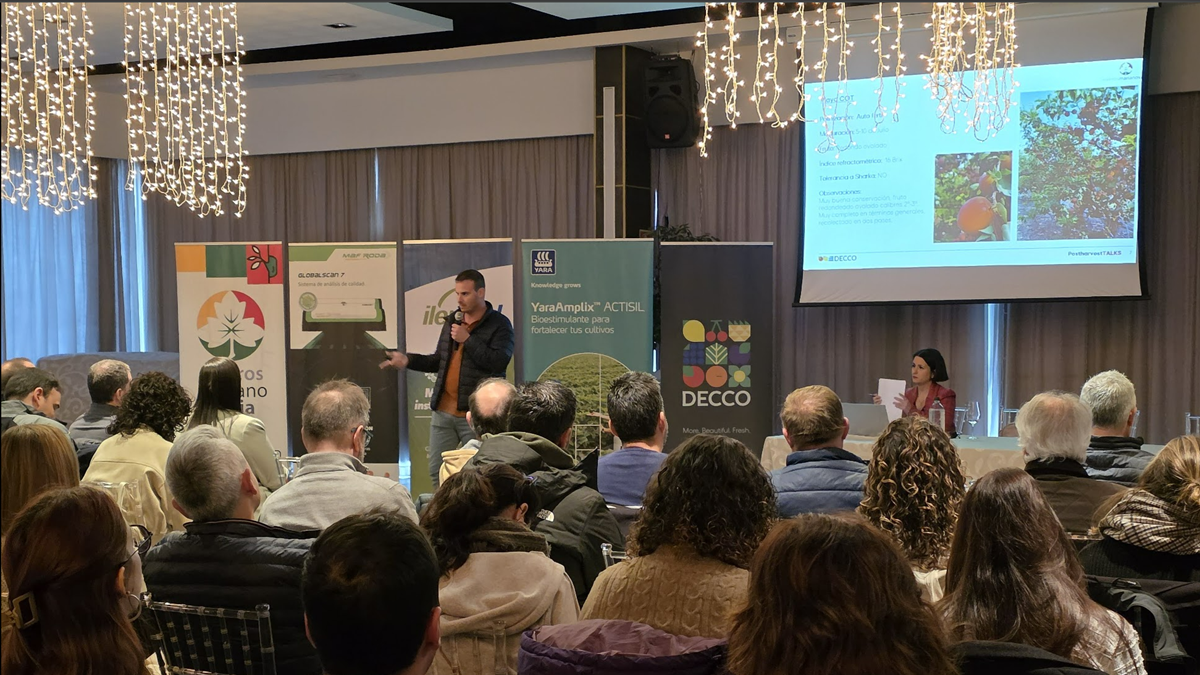
Luis Elías Soria points out that the range of available apricot varieties is significantly broader today than it was just five or six years ago.
When it comes to apricots, Soria highlighted the rising interest in late and extra-late varieties, which fill an underexploited market window. There are now options with tolerance to the Sharka virus, such as Madrigal and Cockly COT.
Unlike regions like Murcia, where limited chilling hours can be a constraint, the Huesca area typically reaches between 800 and 1,000 chilling hours, enabling the successful cultivation of both ultra-early and ultra-late varieties. Historically, fruit prices tend to rise starting in early July, making a strong case for extending the production calendar.
During his presentation, Soria reviewed the traits of several varieties, including Playa Cot, Winnie COT, and Farbela. One standout was Rubibop IPS, a high-yielding variety not tolerant to Sharka, but notable for its impressive 18° Brix and striking color—they even grow it in their own orchards. He also highlighted Madrigal, a more traditionally colored apricot with Sharka tolerance and a harvest period around early August, as well as Cockly COT, a firm, non-mealy variety harvested around August 20–22, also Sharka-tolerant.
As for nectarines, he drew attention to extra-late varieties developed by PSB, noting that some are still in pre-selection stages but could be harvested well into September—offering new commercial opportunities in certain regions.
Regarding flat white nectarines, he acknowledged they may not have had the market impact initially expected, despite the wide genetic diversity available. In both flat peaches and flat white nectarines, there are also late-maturing varieties that allow growers to extend the harvest season beyond August.
Finally, he touched on plums, where there are also interesting options—many of them within “club programs,” though often still relatively accessible. Some of these varieties can be harvested around September 25 and offer an exceptionally long postharvest life.
Quality Is Built in the Orchard and Preserved Afterward
It is well known that postharvest treatments aim to maintain fruit quality—but that quality is primarily determined in the field. Postharvest practices can only preserve what has already been achieved—though certain improvements are possible, such as increasing the availability of compounds that enhance palatability or nutritional value. One of the most important tools in the field is nutritional management, the central topic of María Elize Bordoni’s presentation (Yara Iberian), which she summarized with a clear message:
“Quality is created in the orchard and preserved afterward.”
The goal is to allow plants to fully express their genetic potential, and to achieve this, nutrition must be planned with postharvest performance in mind. Two key elements in this strategy are calcium (Ca) and silicon (Si).
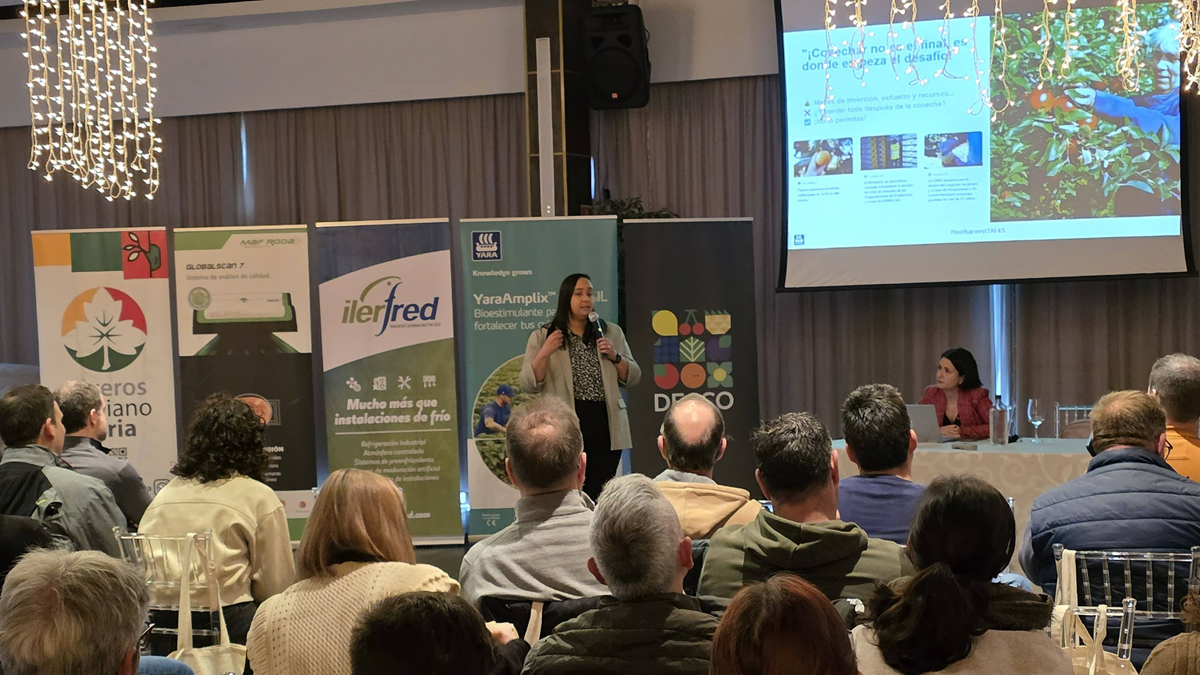
María Elize Bordoni, from Yara Biologicals Iberia: “Harvesting is not the end—it’s where the challenge begins.”
Calcium: A Structural Pillar of Quality
Calcium plays a critical structural role in fruit quality: it strengthens cell walls, reduces mechanical damage and decay incidence, and improves the plant’s stress tolerance by acting as a sort of biological antenna that senses and reacts to environmental stressors. However, calcium’s mobility within the plant is limited.
It is transported via mass flow through the xylem, whose negative charge hinders the movement of positively charged calcium ions. Moreover, calcium movement depends on transpiration, meaning it reaches leaves more readily than fruit. This explains why disorders like bitter pit in apples are more common in fruit growing inside the canopy, where transpiration rates are lower.
The timing of calcium application is critical: it should occur within three to four weeks after fruit set, when the fruit is undergoing intense cell division—a key phase for calcium accumulation. As the fruit grows, the concentration of calcium tends to dilute.
The difference between well-nourished fruit and calcium-deficient fruit can clearly be seen under the microscope by observing the middle lamella of the cells, which is responsible for tissue cohesion.
Silicon: Defense and Firmness
Unlike calcium, silicon is not considered an essential nutrient, but it is a beneficial element. It enhances plant resistance to water stress and pests, reduces dehydration, and improves fruit firmness by stimulating lignin formation. It also triggers the production of phytoalexins (natural plant defenses) and acts as a bioremediator, preventing the accumulation of heavy metals in fruit tissues.
However, silicon poses a challenge: plants lack specific receptors or transporters for its uptake. Furthermore, common commercial forms like silicates have low bioavailability due to the large size of their molecules.
The most effective alternative is orthosilicic acid, a highly bioavailable but unstable form of silicon that must be properly stabilized. Yara has developed a proprietary technology that uses choline as a stabilizer. Choline not only stabilizes the orthosilicic acid, but also acts as a biostimulant—enhancing the effect of fungicides without inducing cracking, unlike glycine betaine.
Yara Solutions: Integrated Nutrition for High-Quality Fruit
Yara’s ACTISIL is a product that combines calcium and choline-stabilized orthosilicic acid, designed for foliar application and fertigation.
For foliar calcium application specifically, Yara offers three YaraVita formulations. One of them, a suspension, is especially suited for fruit that will not be washed, as it leaves no visible residue on the surface.
Precooling: A Key Factor in Preserving Maximum Fruit Quality
Once harvested, fruit begins—or accelerates—biological processes that compromise its quality. The most effective way to slow down this deterioration is to rapidly reduce the fruit’s temperature. Cooling slows physiological and biochemical activity, minimizes water loss (which leads to wrinkling and weight reduction), and limits the activity of pathogenic microorganisms, ultimately extending shelf life.
This process, known as precooling, can be achieved through various methods, including hydrocooling, forced-air cooling, ice application, or vacuum cooling. For stone fruit, the most commonly used techniques are hydrocooling and forced-air cooling, due to their effectiveness and adaptability to postharvest conditions.
During the event, Dr. Laia Torregrosa, Head of R&D at ILERFRED—a company specializing in refrigeration and controlled-atmosphere solutions—provided an in-depth analysis of these two methods. Her presentation, titled “Revolutionizing Postharvest Handling of Stone Fruit: Water and Air Precooling Systems,” offered a clear overview of the benefits of precooling, supported by real-world success stories from the industry.
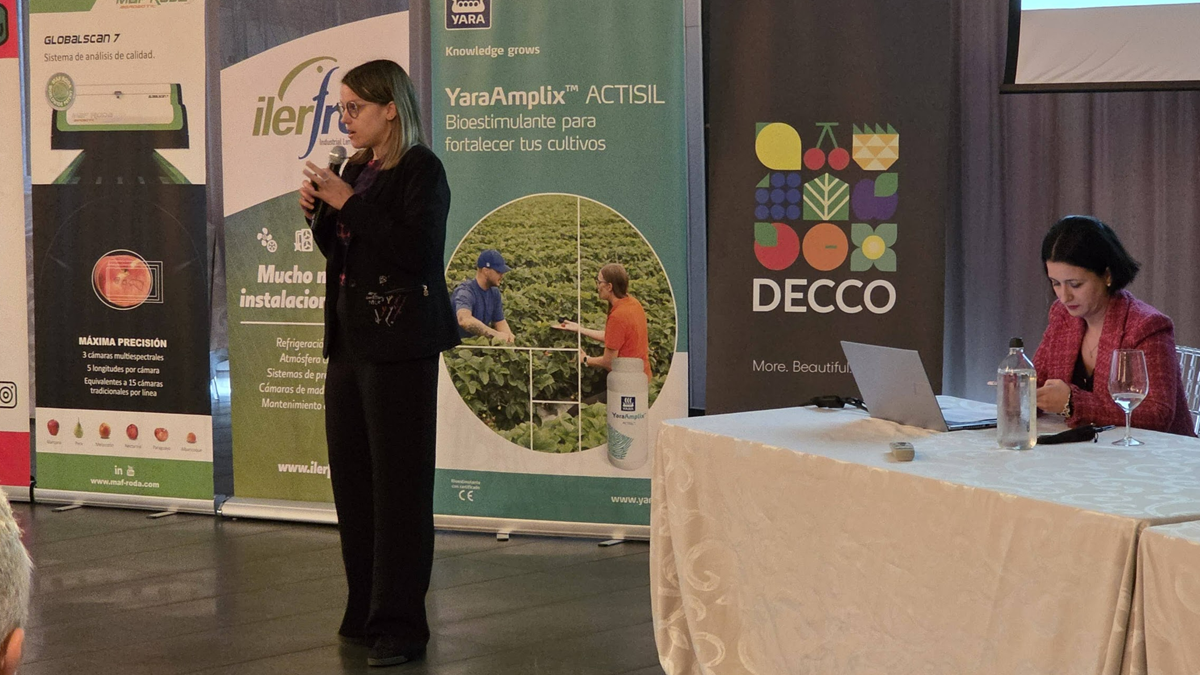
Precooling prevents hot fruit from entering the cold room, which would otherwise lead to increased moisture loss and accelerated quality deterioration, explains Laia Torregrosa
Hydrocooling: Speed and Firmness
Hydrocooling is one of the most effective techniques for rapidly lowering the temperature of freshly harvested fruit. Its key advantage over forced-air tunnel cooling is its faster cooling rate, along with a lower risk of dehydration. However, there are some challenges: untreated water can become a source of contamination, energy consumption is slightly higher than that of air cooling, and packaging materials must be compatible with water immersion.
An added benefit of hydrocooling is the possibility of integrating postharvest treatments into the cooling water to prevent physiological disorders. On the other hand, forced-air cooling, while slower, is a clean, simple, and highly efficient system widely adopted by the industry.
Typical hydrocoolers are about 1.8 meters in height, allowing direct pallet entry. They are constructed with double stainless-steel sheeting and equipped with perforated drip trays designed to reduce water drop speed and protect the fruit. Static and dynamic models are available: the latter use a conveyor belt to regulate exposure time according to the product’s flow. A recent upgrade in static models includes automatic doors, which facilitate loading and unloading with forklifts.
In collaboration with the Postharvest Team at IRTA, ILERFRED conducts studies evaluating the impact of precooling on parameters such as internal browning, reddening, and mealiness. While results vary by variety, in general, hydrocooling significantly reduces these defects, enhances pulp firmness, and boosts the release of volatile compounds, improving overall sensory quality. In peaches, for example, this technique has proven effective in reducing the incidence of early, non-visible infections.
ILERFRED is also actively involved in the Protech Project, in partnership with IRTA and ILERDAGUA, focused on optimizing water use in cooling processes. One area of research involves the use of flocculants for water recovery, with the aim of determining how long water can be safely reused without compromising process safety.
Forced-Air Cooling: Versatility and Cleanliness
Forced-air tunnel cooling is a clean, efficient, and versatile technique. While slower than hydrocooling, its simplicity and lower contamination risk make it a highly attractive option for many packing facilities.
Cooling tunnels can be fixed or mobile. Some operations dedicate a chamber exclusively for precooling, while others adapt standard cold rooms using tarpaulins to channel airflow through the product, driven by suction fans.
Dynamic hydrocoolers typically measure 5 meters in length and allow for adjustment of fruit transit speed, with exposure times between 5 and 20 minutes. Multiple tunnels can be combined to adapt the precooling capacity to the plant’s operational needs.
Fruit Quality and Cost Reduction Through Automation
Historically, the use of machinery in the agri-food sector has been driven by the need to improve or replace manual labor. Today, factors such as labor shortages, the lack of specialized training, and rising labor costs—evidenced by a 54% increase in the minimum wage over the past six years—are accelerating the push towards automation.
Isaac Mataró, Commercial Director of Maf Roda Norte Spain, shared the technological solutions developed by his company to address these challenges in the fruit sector, particularly in stone fruit. He outlined three key pillars for optimizing costs and improving quality:
- Automated quality classification
- Pre-calibration integration
- Automation of packing and internal logistics
Automated Quality Classification: Precision and Efficiency
GLOBALSCAN 7 is the most advanced sorting system on the market. It uses multispectral cameras that capture all wavelengths and, with the help of artificial intelligence, identifies and classifies fruits based on diameter, color, shape, external defects, and soft spots, even evaluating the extent of each imperfection. This is a patented, unique system in the market.
The system integrates with the new Stonefruit QS software, which stands out for its intuitive and powerful visual interface, making user operations more efficient.
To measure internal parameters like the Brix level—an increasingly demanded metric by clients—the INSIGHT 2 system is used. This non-invasive Near-Infrared (NIR) system can analyze up to 22 fruits per second with high precision. It offers two versions:
- Reflectance (R): measures the reflected light.
- Transmittance (T): measures the light passing through the fruit, providing greater precision.
INSIGHT 2 conducts spectral analysis across 600 wavelengths, ensuring accurate readings of the fruit’s internal content.
Pre-sorting Integration: Increased Productivity and Commercial Responsiveness
While the current system of handling fruit is effective, it faces challenges related to the management of surplus calibers and high labor costs. This has driven the integration of pre-sorting as a standard practice in many packing houses, particularly with the advent of Industry 4.0 applied to stone fruit.
Although pre-sorting requires an initial investment and fruit handling in two stages, the benefits are significant. This process optimizes costs, boosts productivity, and enables a quicker response to commercial demands, as the product is pre-sorted and ready for sale.
Pre-sorting can be done in two ways: dry or in water. In dry pre-sorting, fruit is stored in 15-20 kg boxes, which provide careful handling and prevent damage. These boxes are ideal for those working with bulk fruit, as the system is both efficient and cost-effective. The use of vibrating systems to position the fruit in the boxes ensures delicate handling.
On the other hand, water-based pre-sorting, traditionally used for apples, has proven equally effective for other species, both floating and non-floating. This process is highly gentle, as it eliminates impacts and dry transfers, improving fruit preservation. Additionally, the water can be treated to prevent pathogen transmission.
In this system, fruit is stored in bins, and the filling can be done either dry or in water. There are systems that accumulate the fruit in water, and others that do so dry using slats. The latter is particularly suitable for stone fruit, as it minimizes the risk of damage.
When pre-sorting is done in water, the required amount of fruit is gathered in a bin. Once the desired amount is reached, a micro-wave is generated, and by opening a hatch, the fruit is gently transferred to the bin in a smooth and controlled manner. This process ensures the best handling with minimal human intervention, requiring only two operators to manage the equipment. After filling, the bin is labeled and moved to the storage chamber for further preservation.
Production Automation
To optimize internal transport within its warehouses, Maf Roda has implemented two types of Automated Guided Vehicles (AGVs): one equipped with rollers and the other with claws, similar to a trolley. Both models have 20 hours of autonomy, reducing the need for personnel and traditional trolleys, thus improving logistics efficiency.
These autonomous vehicles play key roles in the production chain, such as linking the sorting system with the monocaliber packing lines. The guidance is achieved through different systems, including magnetic bands or natural guidance, and the machines involved in the process autonomously manage operations, optimizing workflow.
Regarding monocaliber packing, Maf Roda offers three automation systems with varying features: Speed Packer, Fastpack Peach, and Linepack V3 Peach.
-
Speed Packer is the initial system that takes fruit from alveolar trays and carefully places it into baskets, which can then be sent for netting or flowpacking. It also feeds up to two basket machines or one flowpacking machine and allows packing of boxes with, for example, 30 x 50 cm layers. With this system, a team of just four people can do the work that would typically take 15 to 20 workers.
-
Fastpack is the evolution of Speed Packer, where the machine automatically manages the orientation of the fruit. This improvement reduces the team size by four or five people and enhances production, reaching up to 1,000 to 1,200 kg of fruit per hour.
-
Linepack V3 Peach takes automation even further. In this case, each robot can pack between 600 and 650 kg of fruit per hour, identifying the stem and color to optimally orient the fruit. This system can be integrated with collaborative robots in production lines ranging from 4 to 16 units and can be combined with advanced quality systems like Globalscan 7 to ensure the final product's excellence.
Methods to Minimize Food Losses
DECCO is a company specialized in post-harvest solutions for fruits and vegetables. During his presentation, Julio Marín Borrás, Business Manager of Decco Ibérica, briefly introduced the “UPL Ecosystem,” a group of companies that share a common goal: adding value throughout the food production process.
This ecosystem includes, in addition to DECCO, the following companies:
- UPL, focused on field solutions
- NPP, specialized in biostimulants
- Nurture Farms, focused on digitalization
- Advanta Seeds, dedicated to seed production
- Veto Pharma, oriented towards bee health in beekeeping.
DECCO offers technological solutions that cover everything from pre-harvest stages to storage, transportation (both land and sea), distribution, and point of sale. Their products are designed to preserve food quality, reduce losses, and extend the shelf life of fresh products.
Currently, DECCO protects approximately 9.5 million tons of citrus, 50% of the pineapples exported worldwide, and 70% of cherries destined for international markets.
In the case of stone fruit, Julio Marín highlighted its high sensitivity and short shelf life, requiring quick action in storage after harvest. The main issues in this category are rots caused by two key pathogens:
-
Monilinia spp., an infection originating in the field
-
Geotrichum candidum, whose incidence has significantly increased in recent years, becoming a relevant problem.
Additionally, at certain times of the season, aesthetic damage associated with fruit wrinkling may appear, which affects its commercialization, although not its safety.
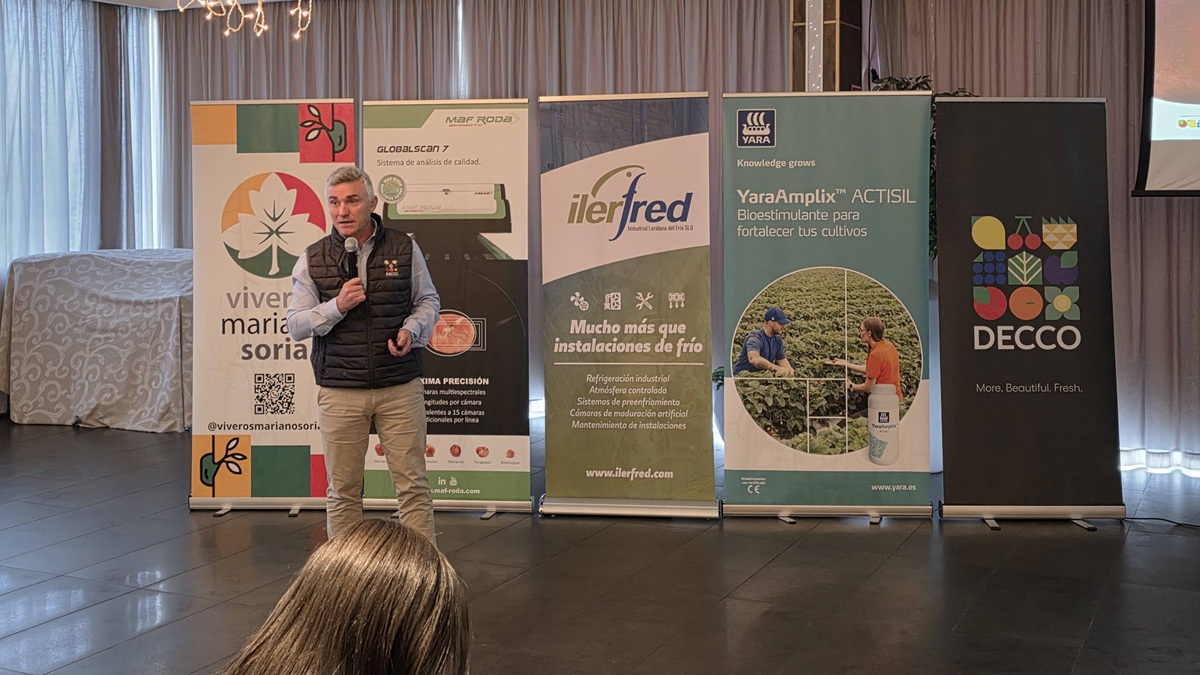
Julio Marin outlines the needs at each stage of the packing process to minimize the causes of quality loss in stone fruit
Solutions for Stone Fruit
DECCO advocates for the use of drencher and tank treatments as key tools in post-harvest handling of stone fruit. The drencher is particularly effective, as it allows for rapid and uniform treatment of large volumes of fruit. It provides full coverage of the fruit and can be integrated with the DECCO Daf system. However, its use requires proper management, as improper handling can turn it into a source of cross-contamination.
The DECCO Daf system is designed for the automatic filling and replenishing of treatment liquids in drenchers or tanks. It ensures that the exact proportion of fungicide needed is added with each bin or pallet to maintain the correct concentration, reducing the risk of human error and ensuring uniform application. Additionally, it incorporates an alarm system to notify users when the product runs low, improving both safety and treatment effectiveness.
As for products, DECCO Pyr is a solution based on 40% pyrimethanil, which works by inhibiting the synthesis of methionine, essential for fungal amino acid and protein production. It acts by reducing spore germination and preventing lesion spread.
DECCO Pyr offers both preventive and curative action and has proven effective against a wide range of pathogens:
- Penicillium spp.
- Monilinia spp.
- Botrytis spp.
- Alternaria spp.
- Gloeosporium spp.
- Rhizopus spp.
During the presentation, test results showed a 92% effectiveness in controlling Monilinia spp. and 80% control over Rhizopus spp.
Additionally, DECCO Pyr is used in "reminder" treatments for prolonged preservation. In a trial with lemon pears, it achieved 96% efficacy against Botrytis, and in Golden apples, when combined with a dip treatment, it achieved 97% control over Botrytis.
Central Disinfection and Control
The first line of defense against the development of rot-causing pathogens in fruit is proper facility disinfection. In this context, the DECCO Washer provides an efficient, precise, and consistent solution for inline fruit washing. This dosing equipment is designed to apply DECCO Sol and/or DECCO Said, reducing both the microbial load on the fruit and the risk of cross-contamination during the process.
DECCO Sol is a specific post-harvest detergent, formulated with biodegradable ingredients, designed for removing dirt, dust, and residues attached to the fruit. It does not compromise the quality of the fruit, making it environmentally friendly.
DECCO Said is a residue-free disinfectant that prevents the formation of biofilms. It can be applied through drenchers, tanks, or spray systems, ensuring versatility across different treatment environments.
DECCO also offers application and monitoring equipment specifically designed for DECCO Said, enabling automatic dosing based on the redox potential of the water. This system continuously adjusts the required product amount to maintain effective and safe disinfection. Key benefits include reduced water contamination, lower water consumption, and minimized cross-contamination.
Additionally, positive results were shared from other products in the DECCO range, such as Decco Triplex, a biocide for surfaces with activity against bacteria, fungi, and viruses, and Decco Aerosol Ultra, an environmental biocide that helps combat resistance and reduce spore counts in the work environment.
The Potential of Coatings
Coatings are essential for extending the shelf life of fruit, as they act as a physical barrier that delays senescence and prevents pathogen activity. For stone fruit, DECCO offers Naturcover, an edible coating that helps reduce weight loss and extend the fruit's shelf life. Trial results showed that Naturcover effectively controls weight loss, maintains fruit firmness, reduces dehydration in both the fruit and the pedicel, and overall extends shelf life.
The precision, effectiveness, and consistency of Naturcover are achieved with the DECCO Dos system, a fungicide and coating dispenser under development, specifically designed for stone fruit lines. Its benefits include the ability to maintain a homogeneous coating on the fruit and ensure uniform residue distribution. The DECCO Dos system is available in manual, automatic, or integration options with Decco Vision.
Ethylene Control in Stone Fruit
Ethylene is a growth regulator that controls various physiological processes, including fruit ripening and senescence. However, this plant hormone can also cause premature ripening and deterioration of products during storage and transportation.
1-MCP (1-methylcyclopropene) is an effective tool for blocking ethylene receptors, slowing down the ripening process and extending the fruit's shelf life. FRUITSMART is DECCO’s 1-MCP formulation, specifically used to reduce ethylene production, delay ripening, and prolong fruit shelf life.
The benefits of 1-MCP, as evidenced in trials with stone fruit, include control of weight loss, maintenance of firmness, and up to a 77% delay in the onset of internal browning in sensitive varieties. In flat peaches, it also reduces vitrescencia (flesh breakdown). As a result, the fruit's shelf life is extended.





